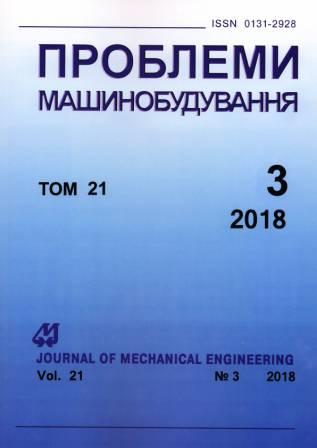Stepwise Optimization of I-section Flexible Elements Under a Fuzzy Approach to Taking into Account Corrosion and Protective Properties of Anticorrosive Coating
Keywords:
corrosion, anticorrosive coatings, optimizationAbstract
This paper is a continuation of research in the field of optimal design of structures under a combined approach to the measurement of corrosion and anticorrosion protective properties of coatings. As noted earlier, such coatings are barrier layers that impede the penetration of aggressive media to the surface of a structure and delay the onset of the process of intense corrosion. In this case, it is important to take into account not only the corrosive effect on the structure, but also be able to estimate the period of time for which the anticorrosive coating loses its protective properties. Since structural elements with damaged protective coatings are able to continue to be subjected to current loads over a considerable period of time, their accelerated corrosion wear is to be taken into account in the damaged areas of coatings. Consequently, the work of the structures protected by coatings consists of two periods: with a protective coating (during which the coating loses protective properties and collapses) and with a damaged protective coating (when there is a severe corrosion wear of unprotected structural areas). The model proposed in the previous study (and implemented on the example of optimization of the flexible elements of a rectangular beam) allows taking into account the smooth transition of the work of structures with protective coatings and the time when the protective properties of anticorrosive coatings practically do not work. This paper considers a solution to a more complicated (due to its multi-extremity) problem of optimization (finding the optimal form) of I-section (double-T) flexible structural elements under a fuzzy approach to taking into account corrosion and anticorrosive coating protective properties.References
Ovchinnikov, I.G. (1991). O kriteriyakh predelnogo sostoyaniya zashchitnykh polimernykh pokrytiy [On the criteria for the limiting state of protective polymer coatings]. Izv. vuzov. Str-vo i arkhit, no.2, pp. 25–28 [in Russian].
Ovchinnikov, I.G., Dvorkin, M. S., & Sabitov, Kh. A. (1993). Bank matematicheskikh modeley korrozionnogo iznosa, primenyayemykh dlya prognozirovaniya povedeniya metallokonstruktsiy. Problemy prochnosti materialov i konstruktsiy, vzaimodeystvuyushchikh s agressivnymi sredami [Bank of mathematical models of corrosion wear used to predict the behavior of metal structures. Problems of strength of materials and structures interacting with aggressive media]. Saratov:Saratov. tekhn. un-t, pp. 141–150 [in Russian].
Karyakina, M. I. (1980). Fiziko-khimicheskiye osnovy protsessov formirovaniya i stareniya pokrytiy [Physico-chemical foundations of the formation and aging of coatings].Moscow: Khimiya, 198 p. [in Russian].
Fridman M. M. (2017). Optimalnoye proyektirovaniye konstruktsiy pri kombinirovannom podkhode k uchetu korrozii i zashchitnykh svoystv antikorrozionnykh pokrytiy [Optimal design of structures with a combined approach to the calculation of corrosion and protective properties of anticorrosive coatings]. Problemy mashinostroyeniya – Journal of Mechanical Engineering, vol.20, no.3, pp. 64–68 [in Russian].
Dolinskiy, V. M. (1967). Raschet nagruzhennykh trub, podverzhennykh korrozii. [Calculation of loaded pipes exposed to corrosion] Khim. i neft. mashinostroyeniye - Chemical and Petroleum Engineering, no.2, pp. 21–30 [in Russian].
Gurvich, N. B., Zakharchenko, V. G., & Pochtman, Yu. M. (1979). Randominizirovannyy algoritm dlya resheniya zadach nelineynogo programmirovaniya [Randomized algorithm for solving nonlinear programming problems]. Izv. AN SSSR. Tekhn. kibernetika, no.5, pp.15–17 [in Russian].
Downloads
Published
Issue
Section
License
Copyright (c) 2018 Mark M. Fridman

This work is licensed under a Creative Commons Attribution-NoDerivatives 4.0 International License.
All authors agree with the following conditions:
- The authors reserve the right to claim authorship of their work and transfer to the journal the right of first publication of the work under the license agreement (the agreement).
- Authors have a right to conclude independently additional agreement on non-exclusive spreading the work in the form in which it was published by the jpurnal (for example, to place the work in institution repository or to publish as a part of a monograph), providing a link to the first publication of the work in this journal.
- Journal policy allows authors to place the manuscript in the Internet (for example, in the institution repository or on a personal web sites) both before its submission to the editorial board and during its editorial processing, as this ensures the productive scientific discussion and impact positively on the efficiency and dynamics of citation of published work (see The Effect of Open Access).

